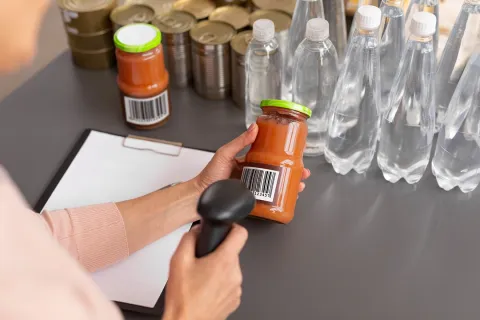Labeling, perhaps the most looked-after section of any product; either a medicinal product, medical device or a cosmetics product. As it furnishes the first-hand information about the product to the outside world, Life Sciences manufacturers across the globe are obliged to manage this piece of information as accurately as possible to win the end-user’s trust. It should not only provide the technical details of the product but should also caution the end-user with proper usage guidance and warnings.
In the case of Cosmetic products, manufacturers should be more cautious in their products’ label. Because most of the Cosmetic products are readily available Over the Counter and are subject to consumption without any prescription. Given that perspective, the usual question every Cosmetics manufacturer would ponder upon is how safe they can be in labeling their products. Are there any set Health Authority (HA) guidelines to manage Cosmetics Labeling? Yes, for sure there are some set guidelines with regards to how a Cosmetic Label should look like and what elements it must include.
Let’s have a closer look at the Cosmetics label elements in various geographies.
1. United States (U.S.)
In the U.S. the Food and Drug Administration controls the Cosmetics labeling under the Food, Drug, and Cosmetic Act (FD&C Act) and the Fair Packaging and Labeling Act (FPLA). The label of a cosmetic product in the U.S. consists of two main sections: Principle Display Panel and Information Panel.
Principle Display Panel
A principle display panel consists of information which indicates the nature as well as the use of the product. The information is conveyed through a common name or an illustration. The label also informs about the net contents of the cosmetic product.
Information Panel
The following information must be mentioned on the information panel:
- In case the distributor and the manufacturer of the product are different, it must be clearly mentioned on the label.
- Material facts must be mentioned on the label to ensure there are no misleading labeling practices.
- If the cosmetic may harm the consumers, the product label must bear the respective warnings and precautions.
- The product must provide an extensive list of the ingredients used in the cosmetic product.
2. European Union (EU)
In the EU, the cosmetic labeling requirements are regulated under EU Cosmetics Regulation 1223/2009. According to this, the label must provide the following information about a cosmetic product:
- Purpose of the cosmetic product
- Name and address of the responsible person
- In case of imported product, the origin country must be mentioned on the label
- The net content of the ingredients of the product
- Usability duration of the product
- Precautions
- Product identification or batch number
- List of ingredients
3. Australia
As discussed in our previous blogs, the Therapeutic Goods Administration (TGA) is in rapid advancement of the current product labeling requirements. Though the focus is on Generics and Pharmaceuticals, the HA also defines Cosmetic product labeling elements. They are:
- The information regarding the ingredients must be provided to the consumers through label
- The list of ingredients must be clearly mentioned on the package or the bottle itself
- The display of information to the consumers is necessary
- In case of cosmetics such as make-up, deodorant, etc., the ingredients must be mentioned on the outer packaging
- The ingredients must be listed in the decreasing order of their volume
4. India
To market a Cosmetic product in India, manufacturers should take the following labeling elements on all the packaged cosmetics:
- Product’s name
- Name and address of the manufacturers and the manufacturing unit
- List of ingredients in the decreasing order of the percentage of content
Outer Label
- Declaration of the net content of the cosmetic product
- List of ingredients as per their percentage in decreasing order
Inner Label
- Warnings and precautions
- Directions for safe usage
- Special mention of the ingredients which are hazardous
- List of ingredients in the decreasing order of the percentage of content
- Number of the manufacturing batch
- In case of soap, the date and year of manufacturing must be mentioned instead of the manufacturing batch number
- Manufacturing license number
5. Korea
In Korea, labeling of cosmetic products is regulated under the Korean Cosmetic Products Act (KPCA). As per the KPCA, a Cosmetic label should contain:
Primary Label
- Name of the product
- Manufacturer’s name along with the name of the Marketing Authorization Holder (MAH)
- Expiry date
Secondary Label
- Product name
- Manufacturer’s name along with the name of the MAH
- List of ingredients exceeding 50ml(g) in the descending order
- List of ingredients with volume between 10ml(g) and 50ml(g)
- Net volume of the ingredients in ml or g
- Price of the product
- The word “기능성화장품” must be mentioned in case of functional cosmetics, along with its efficacy, how to use and cautions approved by MFDS
- Cautions and warnings
- Bar code
- Contact information for support centers
The above-mentioned cosmetic label elements are only just a few. Almost every country across the world has unique requirements. As the elements vary from one country to another, companies need to understand the regional requirements and make sure that they are met, for successful market-entry. The purpose of these regulations is to ensure that consumers can decode product details with ease and can make informed purchase decision. Though some of the Health Authorities may not regulate Cosmetic products, it is suggestible to be compliant for end user’s safety and to stay away from any adverse events. Stay informed.










